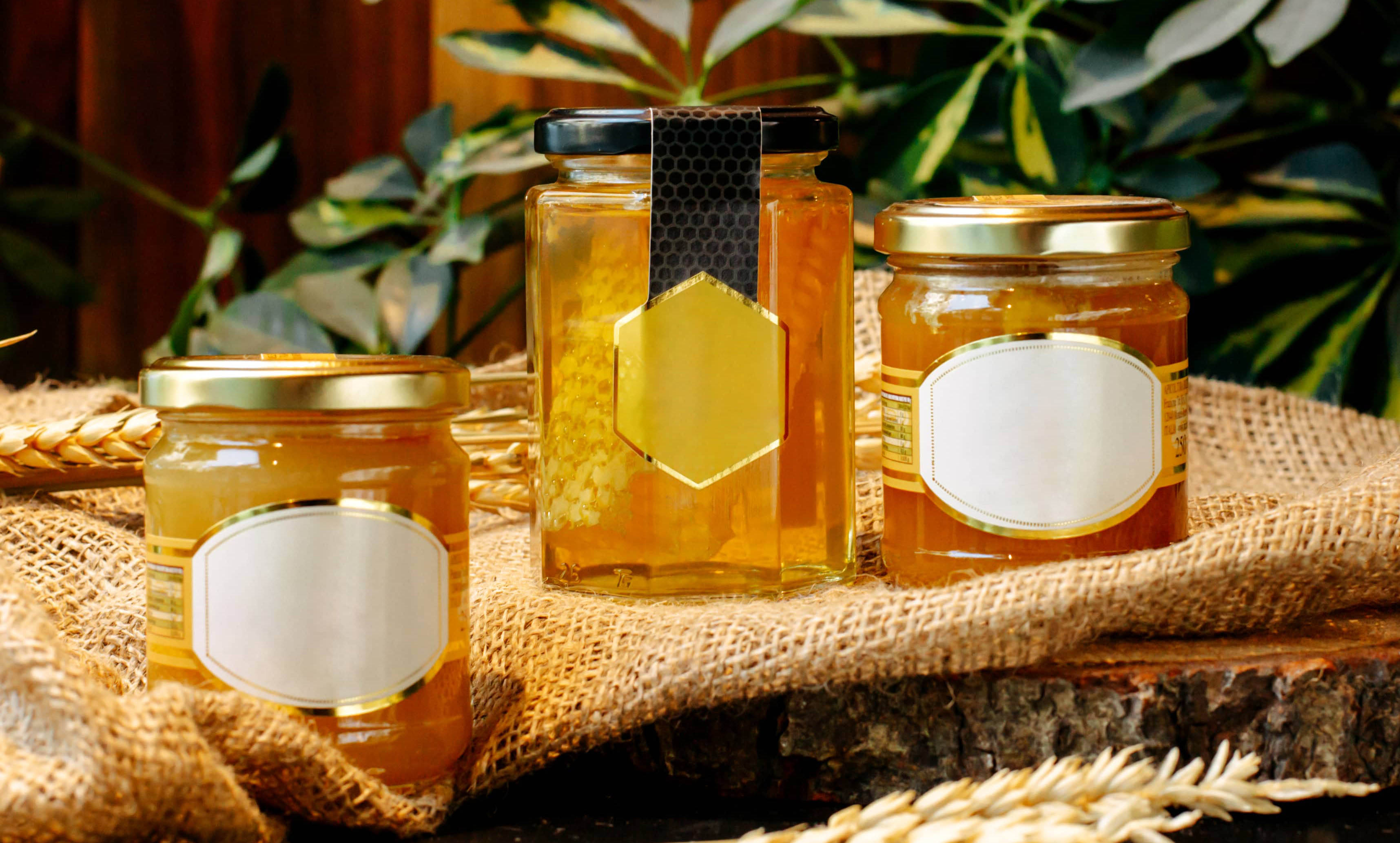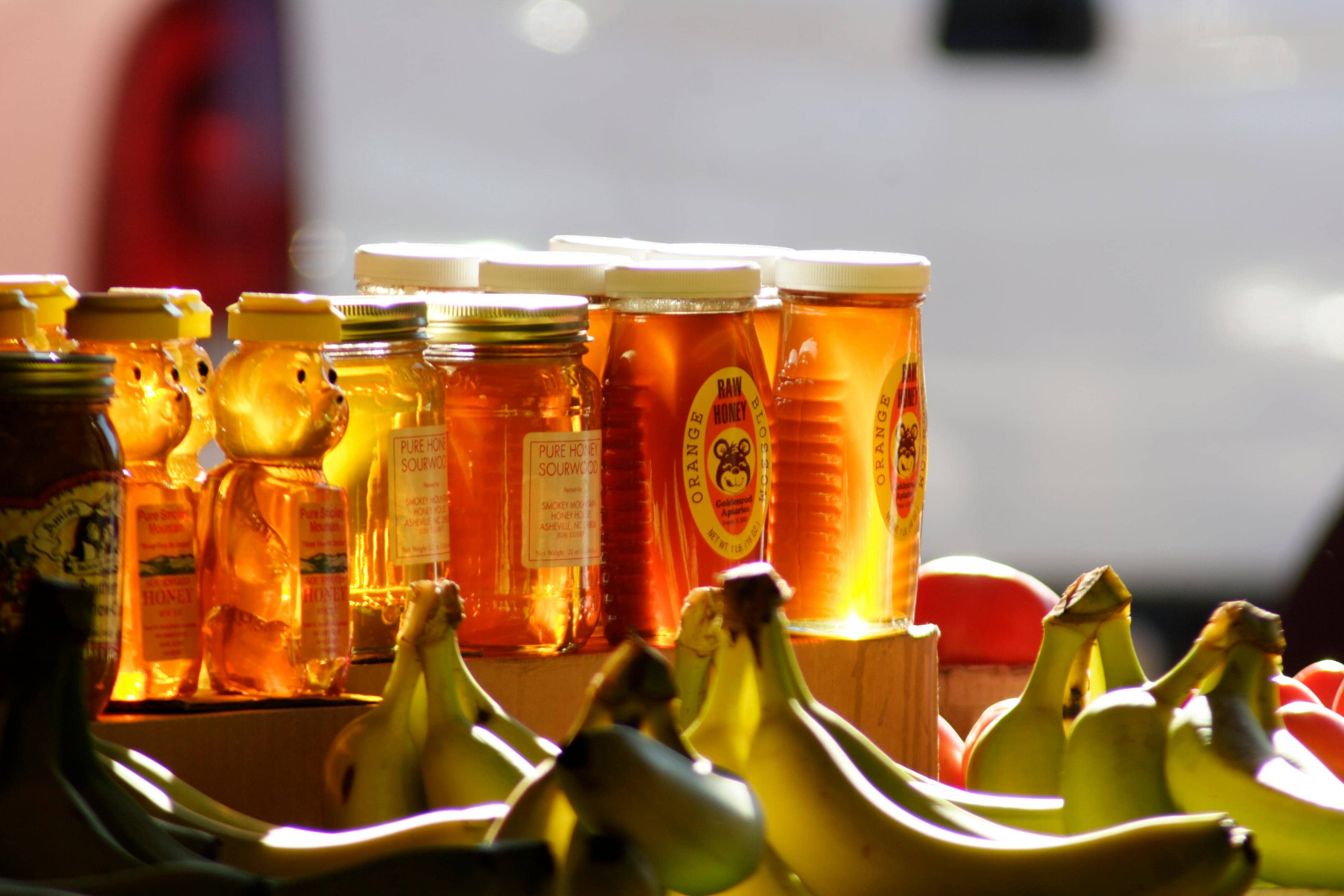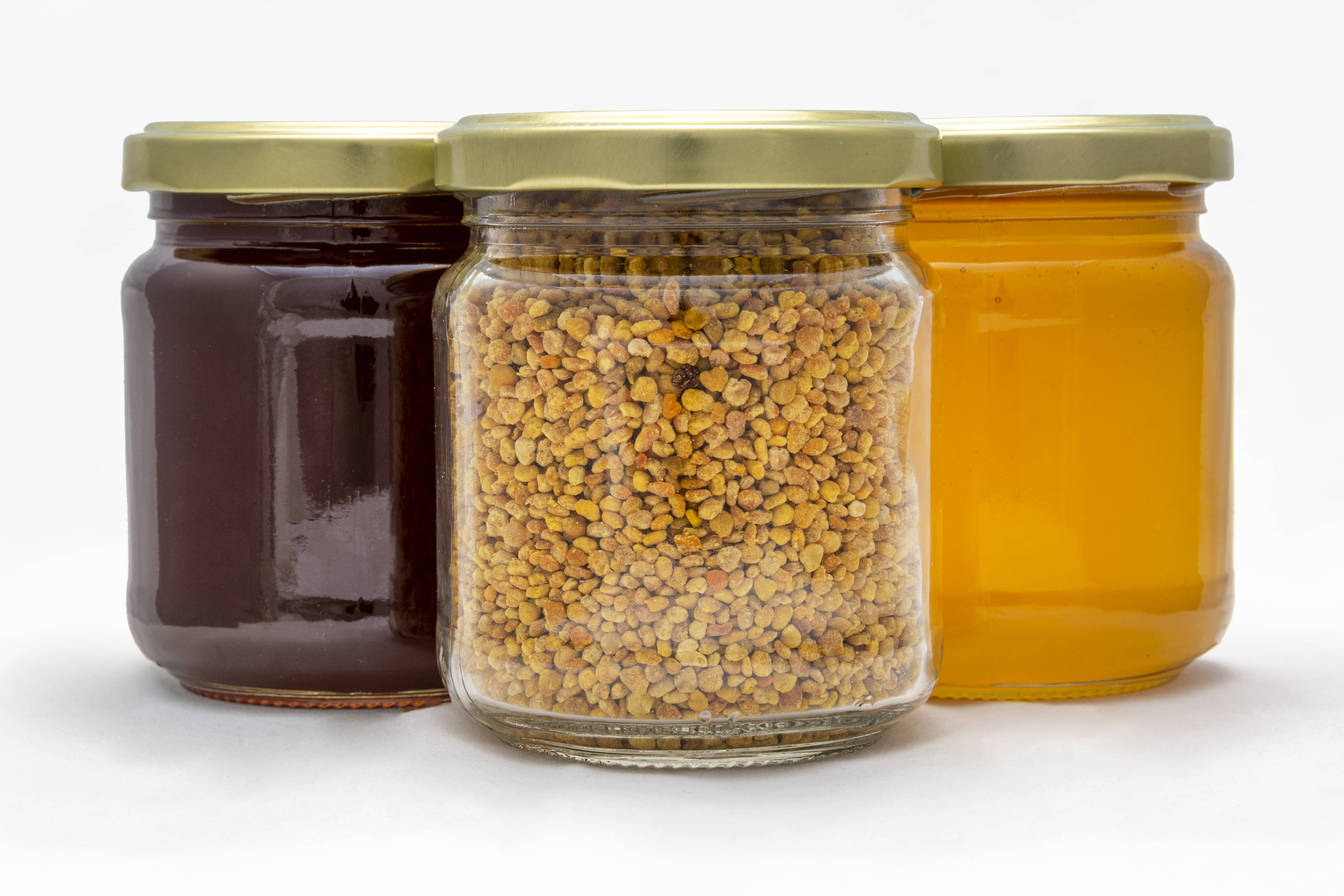Your Ultimate Guide to Honey Packaging
Honey is a popular sweetener known for its health benefits and is often considered a healthier alternative to traditional sugar. To safely deliver honey to consumers, manufacturers must follow specific packaging guidelines. As demand for honey grows as consumers look for natural alternatives to artificial sweeteners and more suppliers enter the market, the need for appropriate packaging solutions is also rising.

Importance of Packaging for Honey
Selecting the right packaging for honey is crucial for preserving its quality and ensuring its longevity on store shelves. Packaging also plays a vital role in brand messaging, enabling customers to recognize and trust specific honey producers. Therefore, choosing the appropriate container is essential, regardless of whether you’re a small e-commerce store, a local honey farm, or a large-scale producer.
Once you’ve found the ideal container that protects your honey and aligns with your brand image, the next step is to identify a cost-effective and convenient solution for purchasing these containers. Buying bulk honey containers can help brands save money, provided that the containers align with their specific needs and provide adequate protection for their honey. By purchasing honey containers by the case instead of individually, suppliers can ensure a continuous supply on hand, ensuring they’re always prepared to package and ship fresh batches of honey.

Types of Honey Packaging Containers
There are several types of honey packaging options that work well for today’s honey providers. These include:
Glass Jars and Bottles
Glass jar and bottle designs provide excellent protection for the honey they store. Glass is an inert, non-porous material that protects the authenticity of the flavor of the honey. Glass honey containers are typically transparent which allows buyers to visually assess the honey’s quality.
Various types of glass jars are suitable for honey packaging. The classic option is a wide mouth jar with clear glass and a metal lid that screws onto a threaded neck finish. These smooth-sided honey jars allow for easy labeling and the wide mouth provides easy access to the honey inside.
Glass is the material of choice for premium honey packaging, such as Manuka honey, thanks to its ability to preserve the quality of the product and provide a sturdy and elevated packaging material. The Mason jar is a popular packaging choice, especially for small businesses and home apiarists.
Glass is also considered sustainable packaging, appealing to eco-conscious buyers and aligning with sustainable packaging goals and legislation. Glass is infinitely reusable and recyclable. Recycling these containers is simple and convenient.
Plastic Containers
Plastic honey containers are a popular packaging option due to their lightweight and durability. Plastic packaging is also extremely versatile and comes in many different shapes and sizes. Some common honey packaging design styles include the straight-sided jar, the round honey jar, and jugs for bulk honey packaging. Plastic honey jars are a versatile and popular container. From small businesses to nationally recognized brands, honey jars are a preferred packaging choice.
High quality food-grade plastic containers can protect the safety and integrity of your honey product quite well. While plastic is a common material choice for honey packaging, you can make it unique through your labeling and branding design, or you can go a step further and create a custom design if you want a uniquely shaped bottle, such as a honey bee or a hive. A Comb honey cassette is packaging for honeycomb.
Squeeze Bottles
For many, the ever-popular Squeeze Bear containers are the first thing they look for when they go to the store to buy honey. Squeeze bottles made from less rigid plastic make it easier for customers to dispense the product. Fliptop caps are most commonly used to dispense honey since varying larger orifice sizes can accommodate the thickness of honey. Squeeze bottles are constructed from food-grade plastic, typically LDPE or PET, due to their flexible nature allowing users to squeeze the bottle for maximum output.
Pouches and Tubes
For smaller servings of honey, such as those intended for on-the-go consumption, pouches and tubes are the preferred containers. These containers are commonly used in food service establishments or for individual consumption of honey. Honey sticks, enclosed in small plastic tubes, are a popular form of single-use containers, while tear-off pouches are ideal for individual servings in restaurants or other food service settings.
Packaging Materials and Their Impact on Honey
When it comes to selecting the best honey packaging for their needs, beekeepers and honey producers must carefully consider their choice of materials. The packaging material can impact the quality and shelf life of the honey, so several factors must be taken into account when making this decision.

Glass vs. Plastic
Glass is a preferable material for honey packaging due to several advantages over plastic. Its non-reactive and non-porous nature ensures no direct impact on the stored honey, preserving its high quality as long as the jar has an airtight seal. Glass also offers an elevated aesthetic appeal and prevents chemical leaching into the honey. This allows the product to be safely stored in unopened glass honey jars for months or more without spoilage. However, glass jars are heavy and susceptible to shattering, so you’ll need to account for some breakage if using glass to package your honey products.
On the other hand, food-grade plastic bottles can be a suitable alternative. Plastic bottles are less prone to breakage if dropped and provide excellent protection against spoilage. Plastic packaging is more affordable than glass and offers a wider range of sizes, styles, and colors, including honey pails or jugs for bulk packaging. However, the disadvantage of plastic is the risk of leaching chemicals into the honey, which can alter its taste. Additionally, its porous nature can lead to crystallization due to the gradual evaporation of the honey’s water content.
BPA-Free Plastics
One way to gain the benefits of plastic honey bottles without some of the risks is to choose a BPA-free plastic. With this plastic, dangerous BPA cannot leech into the honey. This type of plastic is a safer option for the consumer. In addition to jars, you can find plastic pails made from BPA-free plastics for honey storage and transport.
Sustainable Packaging Options
Glass and plastic are both environmentally friendly options for honey packaging. Both materials can be recycled and reused, making them sustainable choices. Additionally, you can opt for plastic made with post-consumer recycled resin (PCR) to incorporate recycled material into your packaging solution.
In addition, innovations in packaging are introducing new, sustainable products to the market, particularly for pouches. Many pouch designs generate less waste during production and can be made from recycled or recyclable materials. These features cater to eco-conscious consumers who prioritize sustainability. There are many ways to improve the sustainability of your packaging, and doing so can make your product more appealing in a crowded marketplace.
Honey Packaging Regulations and Safety
Honey, like all food items, must be carefully packaged and stored before being sold to consumers. Specific regulations regarding packaging and food handling safety apply to honey packaging to ensure its quality and safety. These regulations include:
FDA Regulations
The Food and Drug Administration (FDA) regulates the labeling requirements of honey and all food products in the US. All honey containers must be made from glass or certain food-safe plastics. These approved plastics include high-density polyethylene (HDPE), low-density polyethylene (LDPE), food-grade polypropylene (PP), and polyethylene terephthalate (PET). Glass is also recognized as a food-safe material for honey containers. Abiding by these standards for food-safe materials can help ensure the safety and quality of honey for consumers.
Food Safety Standards
To ensure food safety, honey containers must meet specific standards. The container, whether made of glass or plastic, must be sanitary, free from defects, and airtight. These requirements help prevent unwanted crystallization and maintain the honey’s quality.
Tamper-Evident Features
Honey packaging containers, such as bottles and jars, should incorporate features that indicate whether they have been tampered with. These features could include a seal over the jar’s opening, a pop-up tab on a glass jar lid, or a wrap-around seal that visibly indicates if it has been opened. These product protection measures are essential to ensure the integrity and safety of the honey stored inside. By implementing these tamper-evident features, consumers can have confidence that the honey they purchase has not been compromised, preserving its quality and freshness.
Labeling Requirements for Honey Packaging
Based on FDA guidelines, all honey must be properly labeled. It must state that the product inside the jar or bottle is honey, as well as other specific information on the label.
Essential Information
Honey labels must adhere to specific printing requirements, with essential information displayed at a minimum size of 1/16th of an inch. The following information must be included on all honey jar or bottle labels:
- Product Name: Typically, the product name is simply “honey.” However, some brands may specify the floral source.
- Net Weight: The honey weight is the net weight, expressed in ounces (oz), indicates the amount of honey inside the bottle and must be displayed on the bottom third of the label.
- Producer Information: The name and address of the producer must be clearly stated on the label.
- Country of Origin: For imported honey, the country of origin must be specified alongside the producer’s address. This may differ from the distributor or manufacturer’s information.
- Lot or Batch Number: A lot or batch number is essential for traceability purposes in case of future recalls.
Nutritional Information
The nutritional information on a food label must include two components. First, it must have the Nutrition Facts Panel, which is mandatory for all foods sold in the United States. This panel provides detailed information about the nutrient content of the food, such as calories, fat, carbohydrates, and protein. Second, the label must include an ingredients list. This list identifies all of the ingredients used to make the food product, even if there is only one ingredient, such as “honey.” The purpose of the ingredient list is to provide consumers with transparency about the food’s content and to help them make informed decisions about what they eat.
Optional but Recommended Information
Providing information on the label of honey packaging bottles and jars can help customers make informed purchases. Here is some optional, but recommended information to include:
- Floral Source
- Grade
- Organic Certification
- Raw Honey Designation
- Crystallization Information
- Storage Instructions
- Best By Date
- Barcode
- QR Code (for more information about your product or brand)
- Allergen Statement
- Do Not Feed to Infants Warning
- Processing Information
- Local or Regional Designations
- Sustainability or Fair Trade Certifications

Preserving Your Honey Quality
Preserving honey quality is crucial throughout the packaging, packing, shipping, and storage processes. Honey should be kept at room temperature (between 65°F to 75°F) to preserve quality. Exposure to extremely high temperatures can lead to fermentation. Additionally, choosing packaging containers that filter UV rays can further protect the honey from degradation due to UV exposure. This can be best achieved with opaque containers or colored glass. Keeping the honey out of direct sunlight during storage is also essential. Proper packaging, packing, shipping, and storage practices ensure that honey retains its natural qualities and provides consumers with a high-quality product.
Using Sustainable Honey Packaging
Sustainable honey packaging is made using recycled materials or incorporates materials that can be easily recycled or reused. Given that honey attracts environmentally conscious consumers, adopting sustainable packaging enhances its appeal to your target audience. By doing so, you can continue packaging and selling your product while ensuring that you contribute to environmental protection.
Choosing the Right Packaging for Your Honey
If you’re looking for specialty jars for your honey, honey comb, and other honey-based products, Paramount Global is here to help. Since 1976, we have been helping brands like yours simplify their packaging and supply chain solutions. From narrowing down your style preference to supplying bulk containers for your product packaging order, we‘ve got you covered. Talk to our packaging design team today to discover how we can partner with you!
Hayley is a marketing professional and copywriter with a background in crafting content for a diverse range of industries. She has been writing about packaging and supply chain logistics for Paramount Global since 2022. She specializes in explaining complex topics in a clear and engaging way and is an advocate for sustainability in packaging and supply chain management.
For over forty years, Paramount has been delivering perfectly integrated packaging and supply chain solutions.
